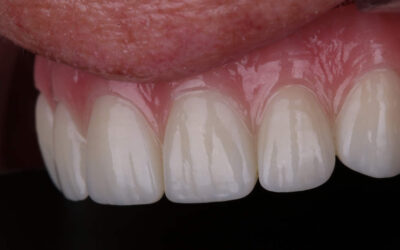At McOmie Family Dentistry, Dr. Mark McOmie has cared for a variety of patients with a wide range of needs. One common issue many of our Chattanooga, TN, patients face is the need for dental bridges. Whether you’re already familiar with this common dental procedure or dipping your toes into the waters of understanding your options, we want you to be informed. Let’s look at how dental bridges work.
Types of Dental Bridges
Before we get into the nitty-gritty, let’s start with the basics. Dental bridges are custom-made dental devices that bridge the gaps created by one or more missing teeth. They consist of two main parts:
Pontic: This is the artificial tooth portion of a bridge that fills the gaps left by missing teeth. Depending on your budget and your preferences, pontics can be made from various materials such as porcelain, ceramic, or metal.
Abutments: These are the anchor teeth, also called abutment teeth, on either side of the gap. The pontic is affixed to these abutments to create a stable, natural-looking bridge
Dental bridges come in different types:
- Traditional Bridges: These are the most common type of dental bridge. The pontic is supported by dental crowns placed over the abutment teeth. They’re an excellent choice when the surrounding teeth are strong and healthy.
- Cantilever Bridges: With this bridge style, the pontic is anchored to only one abutment tooth. While they can be helpful in certain situations, they may not be suitable for the back teeth, where chewing forces are more significant.
- Maryland Bonded Bridges: Also known as resin-bonded bridges, these bridges use metal or porcelain wings that are bonded to the back of the abutment teeth rather than crowns. They’re a minimally invasive option but may not be suitable for all cases.
- Implant-Supported Bridges: These bridges are anchored to dental implants rather than natural teeth. They’re a robust, long-lasting option and an excellent choice for patients with several missing teeth in a row.
Advantages of Dental Bridges
Now that you know more about dental bridges, it’s time to explore their benefits. There are plenty of reasons why people opt for dental bridges:
- Improved Appearance: Dental bridges fill the gaps created by missing teeth, restoring your smile and facial structure. They also look incredibly natural, so you can confidently flash your pearly whites.
- Restored Chewing Ability: Missing teeth can make eating a challenge. Bridges help you regain the ability to chew comfortably, allowing you to enjoy your favorite foods.
- Speech Improvement: Gaps in your teeth can affect your speech, causing slurring or difficulty pronouncing certain words. Dental bridges can help you speak clearly with confidence.
- Prevent Teeth Shifting: When a tooth is missing, adjacent teeth may shift, causing alignment issues. Bridges prevent this undesirable movement, maintaining the integrity of your dental arch.
- Distribution of Bite Force: Bridges help distribute the forces of biting and chewing evenly, preventing excessive stress on the remaining teeth.
- Boosted Self-Confidence: A restored smile can do wonders for your self-esteem. You’ll feel more confident, making engaging with others easier.
Comparisons with Partial Dentures and Implants
Are dental bridges the right choice for you? Let’s quickly compare two popular options: partial dentures and dental implants.
- Partial Dentures: These are removable prosthetic devices designed to replace missing teeth. While affordable, they can sometimes be less comfortable and less stable than bridges. They may also not be as discreet.
- Dental Implants: Implants are considered the gold standard for replacing missing teeth. They involve placing titanium posts into the jawbone and attaching a crown or bridge. Implants are highly durable and closely mimic the look and function of natural teeth. The implant process is more extensive, requiring more visits to the dental office.
So, why choose a dental bridge over these alternatives? Dental bridges strike a balance between affordability, comfort, and durability. They’re an excellent option if you’re looking for a cost-effective solution that still offers a natural appearance and functionality.
Getting Dental Bridges in Chattanooga
Alright, you’re sold on dental bridges and in the Chattanooga area. So, how do you go about getting one? The process usually involves a few key steps:
Consultation: The first step is to schedule a consultation with your dentist, like Dr. Mark McOmie at McOmie Family Dentistry. During this initial visit, the dentist will assess your oral health, discuss your goals, and determine whether dental bridges are the right solution.
Preparation: Once you decide to proceed with dental bridges, your dentist will prepare the abutment teeth. This involves reshaping them and removing a small amount of enamel to make room for the crowns placed on top of the prepared teeth.
Impressions: Impressions of your teeth are taken to create a custom bridge that perfectly fits your unique dental anatomy.
Temporary Bridge: While your custom bridge is being crafted, you’ll be fitted with a temporary bridge to protect your prepared abutment teeth.
Fitting: When your permanent bridge is ready, you’ll return to the dentist for the fitting. They’ll ensure that it fits perfectly and make any necessary adjustments.
Cementing: Once you and your dentist are satisfied with the fit, the bridge is cemented, and voila! You have a beautifully restored smile.
Caring for Dental Bridges
Congratulations! You’ve got your new dental bridge. Now, it’s essential to take good care of it to ensure it lasts a long time. Here are some tips:
- Oral Hygiene: Brush your teeth, including the bridge, at least twice daily. Use a soft-bristle toothbrush and non-abrasive toothpaste to prevent damage to the bridge and surrounding teeth. Floss regularly to keep the area clean and free of food particles.
- Regular Check-Ups: Visit your dentist and hygienist regularly for check-ups and preventive care. They will monitor the health of your bridge and bone support around it.
- Dietary Choices: Be mindful of your diet. While dental bridges can handle most foods, avoid constant exposure to sugary foods and drinks as they can damage tooth structure under the bridge.
- Avoid Bad Habits: Steer clear of habits like chewing on ice, pens, or other hard objects. Smoking and excessive alcohol consumption can also harm your dental bridge.
Potential Complications
While dental bridges are a reliable solution, it’s essential to be aware of potential complications:
- Dental Decay: The abutment teeth are still susceptible to decay. Proper oral hygiene and avoiding sugary foods and drinks are vital to prevent decay.
- Bridge Failure: Over time, bridges may wear or become loose. If you notice any issues with your bridge, contact your dentist promptly.
- Gum Disease: Poor oral hygiene can lead to gum disease, which can compromise the stability of your bridge. Flossing under the pontic and natural teeth (abutments) is imperative. Regular dental visits and proper care are crucial for preventing gum disease.
Dental Bridges Cost
Now, let’s talk about the big question: how much do dental bridges cost? The cost can vary depending on various factors, including the type of bridge, materials used, and your geographic location. Generally, traditional bridges are more affordable than implant-supported bridges. It’s best to consult your dentist, who can provide a precise estimate based on your needs.
Schedule Your Consultation
Ready to take the next step towards a healthier, more confident smile? Schedule a consultation with Dr. Mark McOmie at McOmie Family Dentistry today! Our team provides personalized care and helps you achieve optimal oral health. Say hello to a brighter, more vibrant smile with the dental bridge that is right for you.




